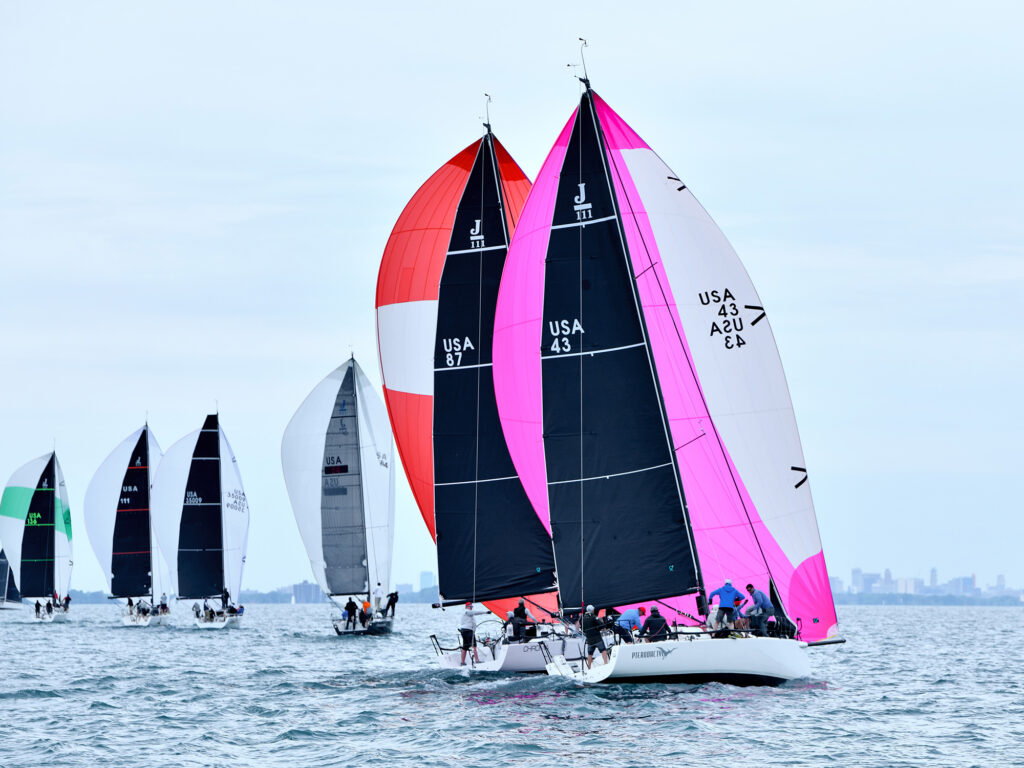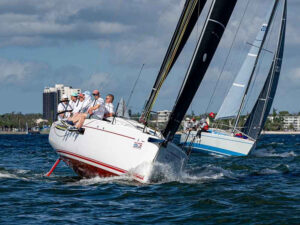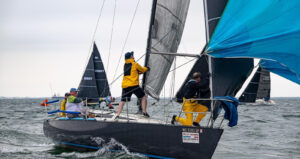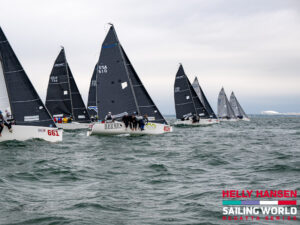
Spring sailing in the Midwest is always fun, regardless of the weather — it feels like opening day at the ballpark, with hopes of a wonderful summer. For many boats, this is their first time sailing together as a team, so any practice prior to the regatta usually pays off.
Getting Ready
To prepare for a successful race, start by practicing boat handling drills to build confidence in maneuvers like tacking, gybing, and mark rounding. The night before the race, do thorough weather research using sites like SailFlow to understand the conditions you’ll face. Take into account the Detroit River’s east/west current at 0.5 knots, which can impact your travel time to the race circle during the regatta.
I aim to arrive at the course site at least an hour before start time. Use this time wisely: spend 20 minutes sailing upwind to adjust trim and tune for wind and waves, followed by 20 minutes sailing downwind to find the best angles. Dedicate 10 minutes to researching the starting line and pinging the ends to gauge distances. Finally, take a 10-minute break to relax, hydrate, and discuss your plan with your team. This comprehensive approach will help you enter the race feeling prepared and confident.
Need-To-Know Wind Patterns
On Lake St. Clair, understanding the wind patterns is crucial for a successful race. A light, northerly breeze typically starts with pressure on the left side and later shifts to the east as the day progresses. If a thermal wind kicks in, it will come from the east, but the day must be warmer than 70 degrees for this to occur. During a warm front, expect a southwest wind with early oscillations to the right, followed by a late shift to the left as you approach the top mark by the shore. An easterly wind usually offers the best pressure on the left side.
The gradient wind, which is predominantly westerly, can shift based on the front approaching. A warm front approaching will shift the wind to the left or south, while a cold front behind will shift it to the right or north. A settled cold front creates ideal racing conditions with an oscillating northwesterly wind. Lastly, a light air day usually ends up with an east wind direction. Understanding these wind patterns can give sailors a strategic advantage on the water.

Wind shear is common in the spring. The cold water prevents warmer air from reaching the surface, causing the wind aloft to be in a different direction than on the water. The direction of the shear often indicates the new wind direction. Understanding these nuances can greatly benefit your podium position.
If you have any additional questions heading into the regatta, feel free to reach out to Wally Cross at wcross@quantumsails.com. Stop by the Quantum Sails Detroit loft with any other needs!









